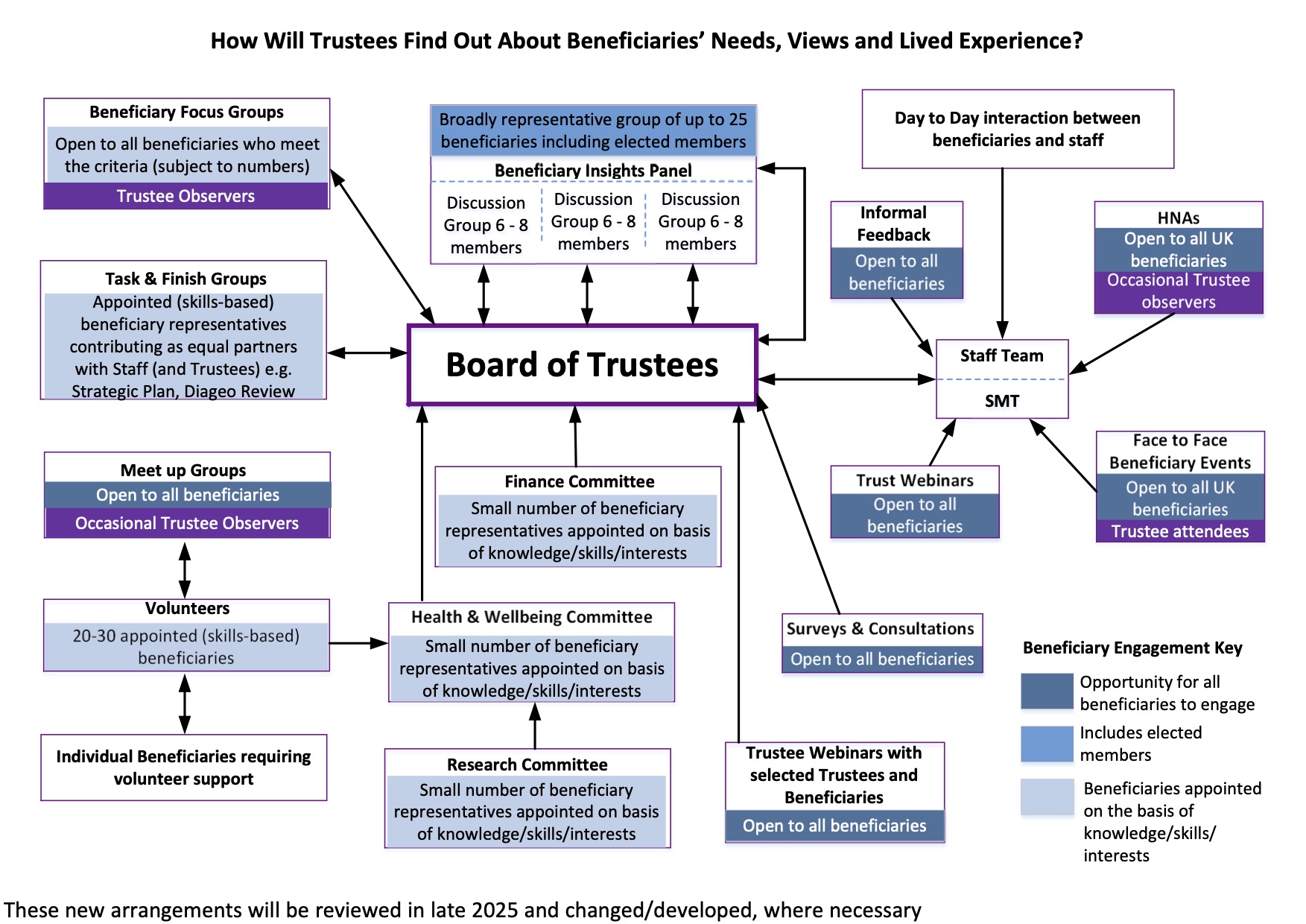Beneficiary Engagement
 What is Beneficiary Engagement and Why is it Important?
What is Beneficiary Engagement and Why is it Important?
Our Trustees have a very important role. Their responsibilities include setting the strategic direction of the Trust and making sure that the Trust’s resources are used effectively to meet the charity’s published objectives – which are all about meeting the needs of beneficiaries.
To fulfil this role effectively, it is essential that they have a good understanding of the needs and lived experiences of the whole beneficiary community.
Beneficiary Engagement is the range of opportunities, both new and existing, which will enable the Trustees to gain this understanding.
Ways that Trustees find out about beneficiaries' needs
The flow chart below shows all the opportunities for Trustees to hear the views and experiences of beneficiaries and how they will work together.
Hover over the boxes and click on those which are highlighted in orange for more information.

Why are we Making Changes Now?
The Independent Governance review that was carried out in late 2022 identified that – although the Trustees had a good understanding of beneficiaries’ needs, primarily from the information gathered at HNAs and through feedback from staff – they had limited contact with beneficiaries to find out directly from them about their personal experiences and what is important to them.
Up until recently, almost all the contact that Trustees had with beneficiaries was through an elected National Advisory Council (NAC) who provided ongoing advice to Trustees on beneficiary issues, attended Board and Committee meetings and were the only beneficiary representatives on all key working groups, including the groups that created the 5 year strategic plan, and prepared for and took part in, the periodic Diageo Chairs’ Reviews.
Individual NAC members worked hard and contributed an enormous amount to the Trust, but due to the fact that very few beneficiaries put themselves forward for election, there was very little turnover in membership and, because they were a small group, it wasn’t possible for them to be representative of the whole beneficiary community.
The Review recommended that Trustees introduced new ways of hearing directly from a greater number, and more diverse range, of beneficiaries so that when they make important decisions, they do so in the confidence that the have a good understanding of the lived experience and changing needs of beneficiaries.
How did Trustees Decide on our New Approach?
Before making any changes, Trustees had a series of meetings with NAC members, asked the staff for ideas and undertook a consultation with all beneficiaries to seek their views on future beneficiary engagement. Taking all these views into account, they agreed an exciting new approach to beneficiary engagement which is designed to complement and enhance the data on beneficiary needs gathered in other ways.
Reviewing Beneficiary Engagement
We realise that this new approach to Beneficiary Engagement means a lot of change – particularly as there is no longer a National Advisory Council (NAC), as there has been for many years. However, the Trustees feel the new arrangements will mean they hear directly from many more beneficiaries and they will have a far better understanding of the views and lived experiences of the beneficiary community.
As a number of new initiatives are being introduced, the Trustees are committed to reviewing the new arrangements in around two years’ time to see if they have resulted in a more effective beneficiary engagement. If necessary, they will make changes to the current initiatives or try out new ideas, as they believe it is crucial that they get beneficiary engagement right.
